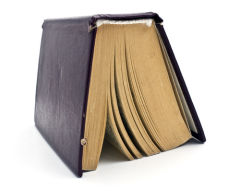
Who among us, dear ladies, hasn't read romance novels? Oh, how many tears their heroines shed, how many unexpected twists await them on the pages of books! Scarlett from “Gone with the Wind,” Maggie from “The Thorn Birds,” Jane Eyre from the novel of the same name, Angelique—all of them have become symbols of women's literature.
Women's novels are typically introduced to young adults. They crave excitement, adventure, and meeting real men. But life often fails to provide these opportunities for young women. And that's where books come in.
It's best to start with famous authors—the Brontë sisters, Margaret Mitchell, Jane Austen. No one can reveal the secrets of the female soul better than the women themselves. The heroines of these writers are courageous, full of life, honest, and sympathetic. Most importantly, they all maintain a certain moral compass and can teach us a lot.
Let freethinkers argue that literature shouldn't teach and that the author has no right to speak to the reader in a teacherly tone. But an intelligent reader always knows where, when, and in what tone the author speaks to them. And if a book describes genuine feelings, experiences, and quests, and expresses useful ideas, then why not take note? Literature should make you think, make you think in an unobtrusive and engaging way, and not degenerate into “paper chatter” about nothing.
The success of women's novels lies precisely in their unobtrusive and simple invitation to reflect on life—not the life of a detective or a crime boss, a politician or a superman, but the life of a woman with all her romantic, personal, and perhaps even social problems. The heroine of a women's novel doesn't necessarily need to save the world or fight interplanetary evil; she's content with being able to understand herself and find a way out of life's difficulties without sacrificing her principles.
Modern women's novels can be divided (not at all roughly) into romance, erotica, detective fiction, and psychological thrillers. “Bare” erotica or romance without intrigue is monotonous and boring. Such books are uninteresting to read a second time. The same can be said about the currently popular women's detective novels. These books are read “in one sitting,” then gather dust in bookcases, forgotten by everyone. This happens because behind the external dynamics of the plot, there is no internal dynamics, no conflict. There is no struggle.
The secret to the popularity of, for example, Gone with the Wind lies in the strong and complex characters. Scarlett is not a rabid erotomaniac, nor a dry, shallow female detective. She's just a woman! Insufferable, capricious, and strong.
It's high time modern authors realized: readers aren't omnivorous! A reader isn't just a student reading on the go or a tired housewife settling down to read a book in between classes. And women's novels aren't just a good way to make money. The women's novel is a genre no less serious than any other literary genre. It would be great if authors enriched their “lighter” texts with landscapes, simple, relatable scenes from everyday life; then their books would become warm and lively. And then readers would make their books their bedside books. And what else does a true writer need to be happy?
So why do we need women's novels? To read them! So that on a rainy autumn evening we can immerse ourselves in someone's fascinating life, recognizing ourselves in the heroines, or, conversely, not recognizing ourselves. So, let's read women's novels, dear ladies, and transform today's characters into future heroines, so that in a hundred years our great-granddaughters will be engrossed in books like “Jane Eyre” or “The Thorn Birds.”





